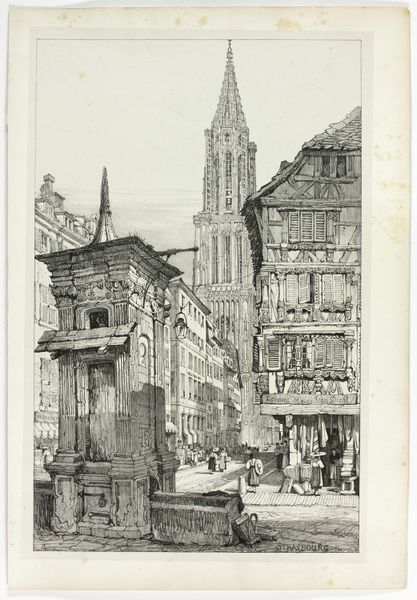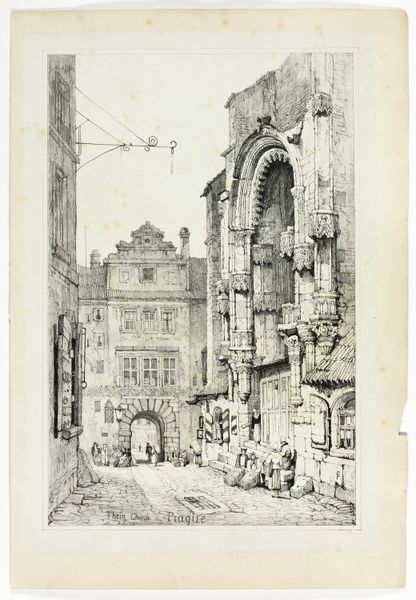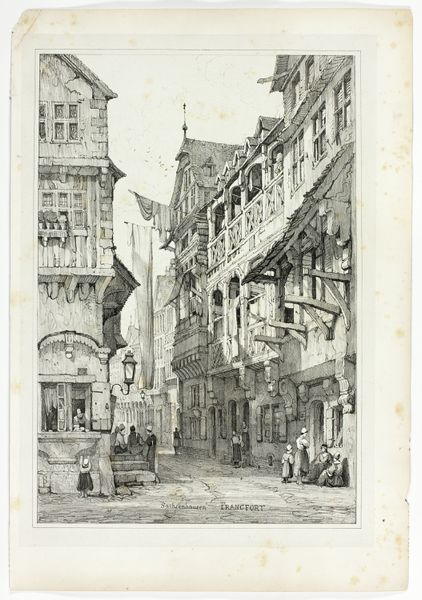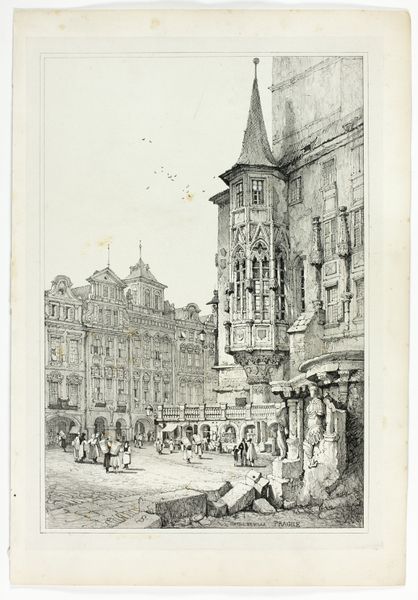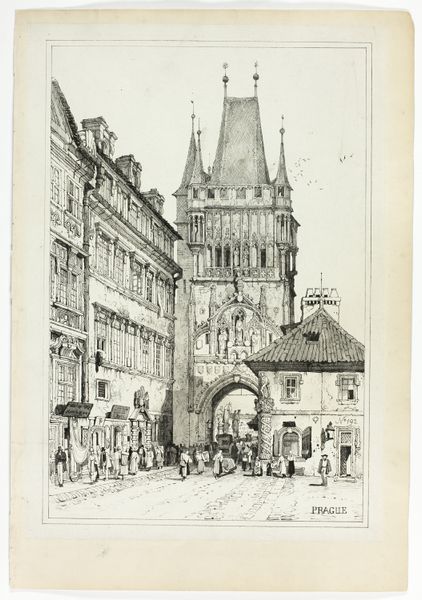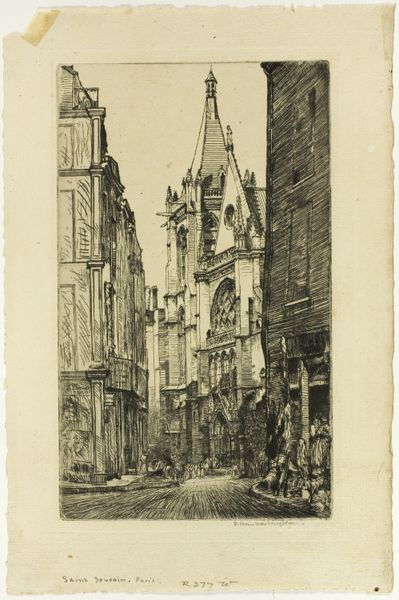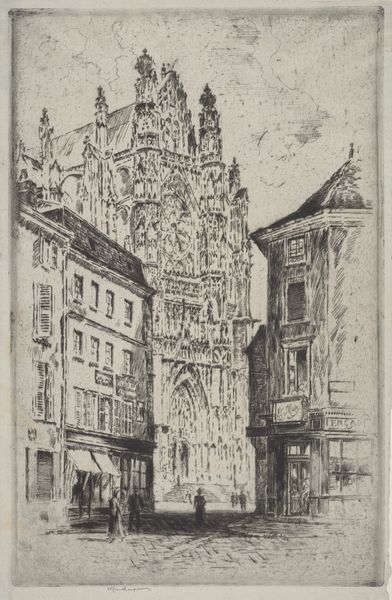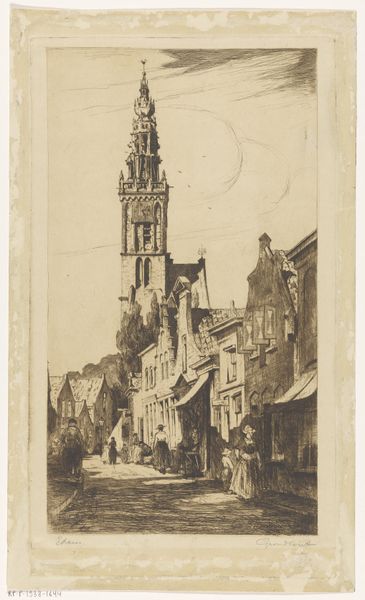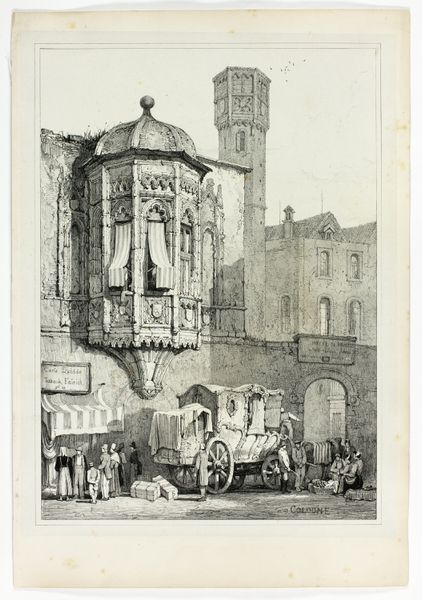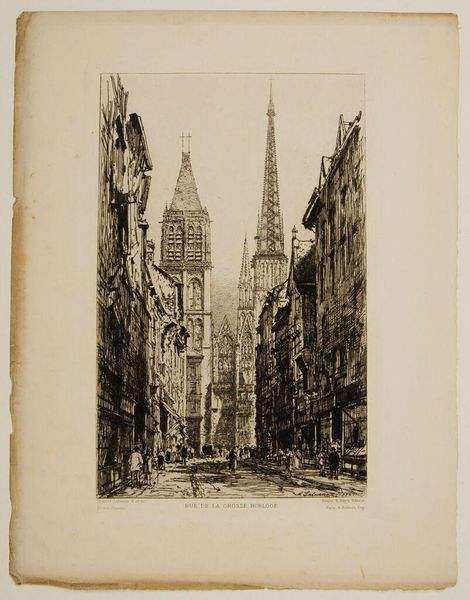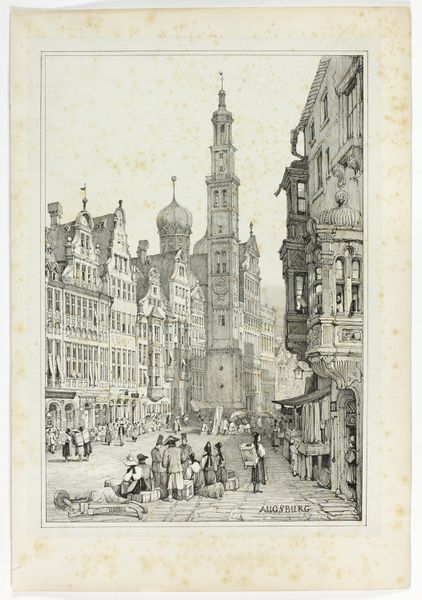
drawing, lithograph, print, paper, ink
#
drawing
#
lithograph
# print
#
landscape
#
paper
#
ink
#
romanticism
#
cityscape
Dimensions: 290 × 425 mm (image); 310 × 445 mm (primary support); 345 × 500 mm (secondary support)
Copyright: Public Domain
Curator: Here we have "Dome Francfort," a lithograph from 1833 by Samuel Prout, now residing here at the Art Institute of Chicago. Editor: What strikes me immediately is the towering presence of that dome against the compressed perspective of the street. It feels almost dreamlike, like a vision rising above the mundane. Curator: Precisely. Prout's choice of lithography allows for such incredible detail in the textures of the building and the subtle gradations of light and shadow, all contributing to this sense of depth and grandeur. Think about the physical act of drawing on the stone, the craft itself infusing the scene with this romantic aesthetic. Editor: The cathedral clearly functions as a symbol of enduring faith amidst a bustling mercantile center, which you can see in the daily interactions of individuals with distinct clothing in the street scene before us. Curator: Indeed, and let's not forget the materiality of the ink, its very composition reflecting the social and economic currents of the time. It’s remarkable to see this industrialization represented within this particular medium. The paper support too, the way its absorbency affects the image—all integral. Editor: Beyond mere representation, there is cultural memory encoded in that architecture. The Frankfurt Cathedral, the Roman Emperor's Election place from the 14th century, resonates deeply within the German identity. This visual echoes and strengthens connections across generations. Curator: An apt point! It makes one wonder what the laborers printing these images thought as these buildings were constructed... or rebuilt following years of disrepair... all recorded here to sell within a growing European tourism trade. Editor: In observing Samuel Prout's image, my reflections shift to its role in fostering a shared consciousness. I am touched by Prout's enduring ability to capture how places become woven into the tapestry of memory. Curator: Absolutely. This particular print showcases how closely tied craftsmanship, materials, and societal shifts remain interwoven in works that can outlast even the monuments themselves.
Comments
No comments
Be the first to comment and join the conversation on the ultimate creative platform.
